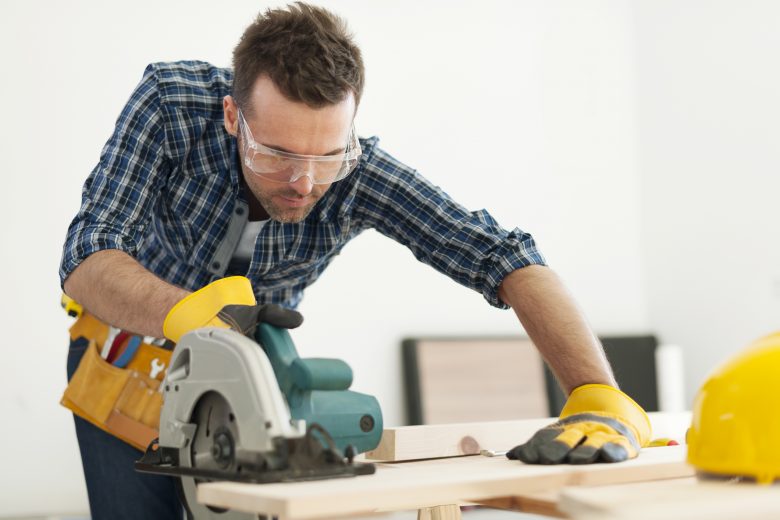Every year many people are injured, suffer amputations or even get killed in incidents involving workplace machinery. According to OSHA, “workers who operate and maintain machinery suffer approximately 18,000 amputations, lacerations, crushing injuries, abrasions, and over 800 deaths per year.” Machine guarding regularly makes it to the top ten of OSHA violations, which illustrates how prevalent this issue is. The number of people affected by it and the number of citations given to companies each year are symptoms of a serious problem.
The purpose of machine guards
When employees work with machines that have the potential to catch, cut, burn, crush or cause other harm, employers must take steps to ensure their safety. This includes protecting machine operators from ingoing nip points, rotating parts, flying chips and sparks.
There are three main regulations regarding machinery such as guillotine cutters, shears, power presses, power saws and other similar devices. Companies are required to:
- provide one or more methods of guarding;
- attach guards to the machine or secure them where attaching is not possible; and
- design and attach guards in such a way as to make it impossible for workers to become exposed to the hazard by reaching under, over or around the guard.
It’s worth addressing the last point above and remembering that, at times, workers might try to reach an obstruction or unblock a piece of machinery that is stuck. Sometimes people have the best intentions but can end up seriously hurting themselves if they step or reach around machine guarding. It’s vital that guards are designed and attached in such a way as to prevent any access to the point of operation and contact with the hazardous parts, regardless of the intention of the operator.
Although there are many types of guards available on the market, it’s up to the purchaser to ensure that they are compliant with OSHA requirements and meet the expected standards to:
- prevent contact with dangerous moving parts;
- be secure, durable, and not easily removable;
- protect machinery from objects falling into its moving parts;
- create no new hazards;
- create no interference that might prevent a worker from performing a job quickly and comfortably(such devices might soon become uninstalled, disregarded, overridden or blocked); and
- allow for safe lubrication.
The types of guards
As you consider different guards available for machinery, while making sure that they meet the standards and protect workers, you will have to assess which of the main types of guards best suit your workplace:
- fixed guards, which have to be attached with a specified opening size and distance from the hazard;
- interlocking guards, which stop operation of machinery if the guard not in place;
- adjustable guards, which allow flexibility in accommodating various sizes of stock being fed into the machinery;
- self-adjusting guards, which allow for an opening of the barrier by the movement of the stock being fed into the machinery. For example, if an operator moves stock into the danger area, the guard is pushed away enough to allow only the stock to be allowed to pass. The guard returns to the rest position immediately after the stock passes; and
- presence-sensing devices, which stop operation of machinery if a hand or any other part of the operator’s body enters the danger zone.
There are also types of equipment designed to protect workers by restraining or withdrawing the operator’s hands from the danger area with a pullback device or restraint. In addition, you may want to consider safety solutions such as two-hand control and two-hand trip that require both of the operator’s hands to be at a safe distance from the hazard area for the machine to work.
If you’re unsure whether your plan and new guards are up to the task, or that your workplace even needs guards or protective devices, you can consult OSHA’s machine guarding checklist. One thing is absolutely clear: if your workers operate machinery with any moving parts, guards are a must.
Training
Many machine guards and other safety features may be unfamiliar to their operators. They may not understand all the hazards of the machine they are supposed to use, and might not realize that long hair, jewelry or loose clothing could get caught in the moving parts. Training can help them recognize these and other issues in their work area.
Training on how to operate equipment must address all the hazards associated with each machine and help workers understand how each safeguard protects them from harm. In addition, workers should be taught how to use the safeguards and under what circumstances (if ever) these can be removed. For example, if the machine needs to be repaired or oiled, they should know exactly who is authorized to perform such jobs. Machinery operators also have to understand what to do if a safeguard becomes damaged, comes loose or needs to be replaced for some reason.
You mustn’t forget to discuss the use of PPE while operating equipment with safeguards. Employees should know that some PPEs can present their own dangers, such as gloves getting caught in the machinery or clothing becoming snagged on a guard, and how to prevent them.
You may want to include human factors training as part of your machine operation safety program. It helps workers recognize and address factors that might negatively affect their performance and safety awareness. After all, the human element often plays a huge part in workplace incidents and training can help workers deal with factors they might not realize are influencing their actions.
In-depth training and regular refreshers are vital to keeping workers aware of the hazards they face every day. Guards are indispensable for machine safety, and so is training that informs workers why these guards are there and how to work with them to ensure a healthy and safe work environment.

